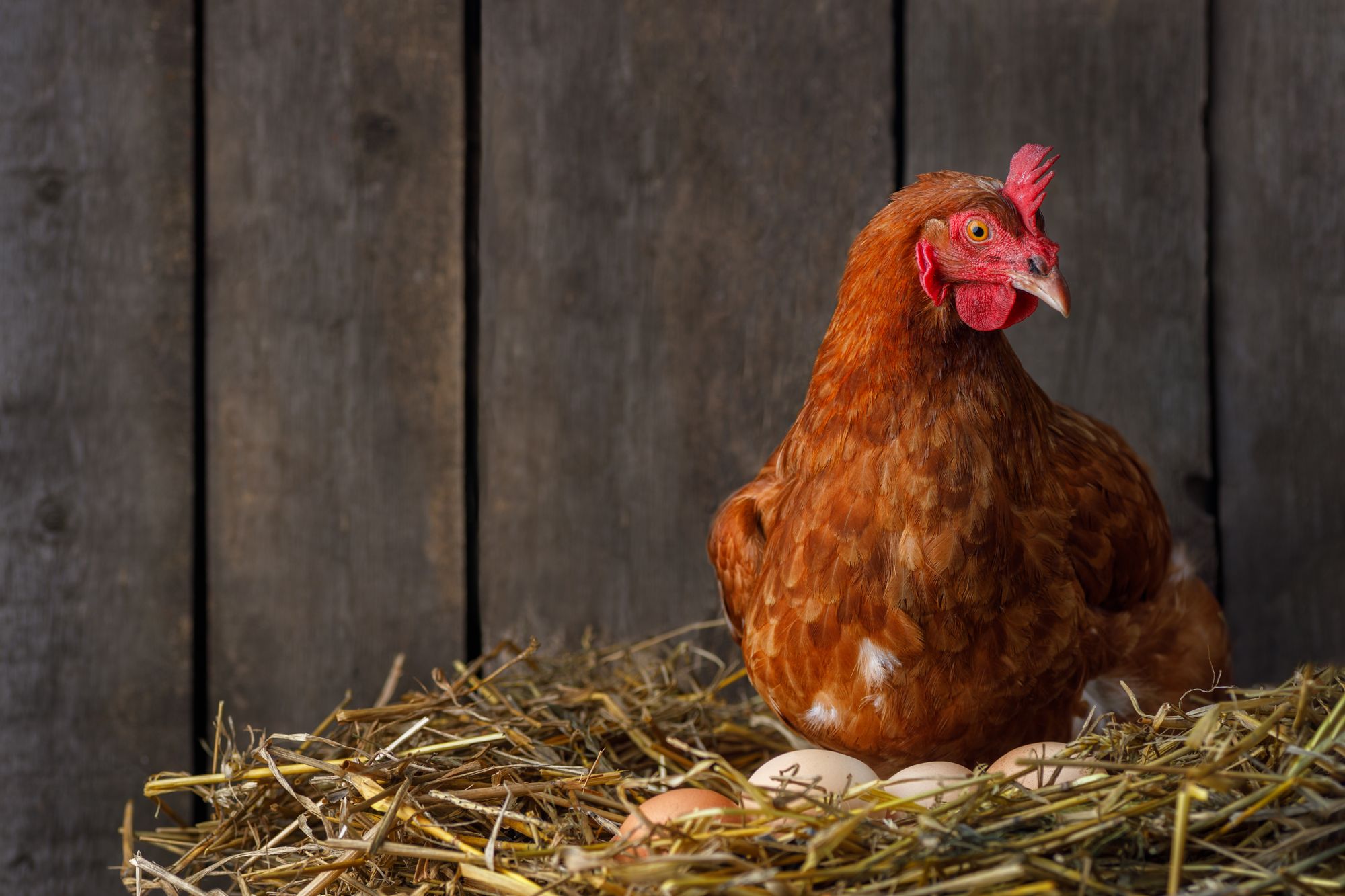Eye Spy Light and Sight: Your Flock’s Perspective


We know that light plays an important role in your flock’s egg-laying behavior. Chickens need light for at least 14 hours a day in order for their gonads to produce either semen or eggs. The amount of light a chicken receives in a 24-hour period is called the “photoperiod” and the “photosensitive phase” is between 12 and 16 hours.
Sixteen hours—two-thirds of a day—is preferable and that corresponds to the longer days of summer. This is called a “long day schedule” and there is also a “short day schedule.” The short days, eight hours of light, are used when the chickens are growing so that they do not mature before their bodies are able. If you recall, even blind chickens still lay eggs because the light penetrates to the interior parts of the brain to what are called extra-retinal receptors.
So which lights should you add to your coop? The next time you to the hardware store to pick up a new package of bulbs, take a look at the array of options, and be prepared linger a bit to consider all the new bulbs and wattages.
Which bulb or product do you buy? Which one isn’t going to break the bank? Which one is going to last the longest? You are not alone in asking these questions. Many a commercial chicken farmer must ask the exact same questions. You may raise chickens as a hobby, but the economics of this decision are no different for you as they are for a commercial farmer. However, a commercial farmer has a wealth of information on which systems and bulbs are best.
Chicken superpowers?
Did you know that chickens see differently from us? We see in what we call the visible spectrum of 400-750 nanometers (nm). Our light peak is between 550-560 nm whereas chickens have three peaks. We do not see well into ultraviolet or infrared spectrums. Chickens have three peaks and are sensitive to red and blue spectra and they even see UV-A light.
Much like our eyes, the chicken retina has rods and cones, plus their extra-retinal receptors are located in the pineal gland and hypothalamus. As much as I would like to say that chickens have superpowers, like X-Ray vision, the added feature of chicken vision that makes them a tad bit more awesome than we mere mortals is that they are tetrachromatic. Chickens have a special double cone that some think may be related to tracking movement.
We humans are trichromatic in that our retinal cones see red, green, and blue.
Red light penetrates the chicken’s skull to stimulate the extra-retinal receptors. Chickens exposed to red light when their bodies are mature for egg laying have a higher rate of lay. Red light penetrates the skull and brain at 4-50 times more efficiency than the other colors. That means that red light is better for your laying hens than blue, green or white light. This is important because the hypothalamus is where the hormone cascade associated with egg production begins.
Blues for the greens
Blue light can be a part or your equation, just not right when you want eggs produced by your flock. Growth, maturity, and uniformity are all keys to getting your flock into synchronous lay. That means you want most of your hens to lay at about the same time, specifically when their bodies are mature enough to handle it. Their body uniformity is determined by their growth, which you control with food and a healthy chicken coop environment, but light plays a role too.
Blue and green spectra appear to assist in growth, more so than incandescent bulbs even with meat chickens. So should we be swapping out your old incandescent or CFL bulb for something else at different times of your flock’s growth and production phases?
Yes, in fact you can do just that! You can start with blue/green when they are growing and then a few days before they start to lay, you can switch to the red spectra. So what lights should you choose and where can you find them to make all this happen?
Light source differences
Incandescent bulbs
Pros – inexpensive, good in the red spectrum, good light distribution in the coop, good cold weather performance
Cons - short lifespan, prone to breakage (glass shards in the shavings), 90% of the energy goes to heat instead of light
Compact Fluorescent Lightbulbs (CFL)
Pros – inexpensive, energy efficient, sold in warm and cool spectra
Cons – contain mercury, spirals are a pain to clean, prone to breakage, poor cold weather performance, takes time to reach max light intensity
Linear Fluorescent Lights
Pros – inexpensive, energy efficient, sold in several spectra, casts an even light on floor,
Cons – more expensive than CFL, prone to breakage, more difficult to transport and store, poor cold weather performance, takes time to reach max light intensity
Light Emitting Diode (LED)
Pros - Provides full spectrum light, no heat emitted so can be made of non-glass shatterproof/waterproof material, very long lifespan (upwards of 10 years even at 16 hours/day), dimmable (which can extend the LED life), adjustable spectra, efficient in cold weather, quickly reaches max intensity.
Cons – expensive, must use the right dimmer (or you can get flickering or fast burnout), light is directional so need a diffuser to get broader light distribution, cheaper LEDs may not survive life in a chicken coop environment.
Shadows and light
Because there are a few light products available for small flock and backyard poultry owners, we should talk about how you can use them. We all know that dark spots are where your hens seem to prefer laying their eggs. Putting lights in the nest box is not a good plan, despite our wish to make sure we are not laying a hand on a snake that invades the coop! Putting your lights up high will illuminate just about all of your surfaces in the coop.
Pay attention to areas that fall under shadow. Do you get a shadow under the nest box if it is mounted on the wall? How about a corner far from a coop door or window? If you were to place lights overhead or on a wall, will the light reach all your nooks and crannies? Installing an additional light in one of these spots will help you avoid floor eggs from hens that wan to lay in an inappropriate spot. Floor eggs are dirtier and situations that lead to them should be avoided.
Dimming the lights will lower the light intensity and extend bulb life in specific cases. Chickens don’t need light full blast all the time. In fact, light that is too intense stresses them out. Natural daylight on a bright sunny day can be 60,000 to 100,000 lux and even higher in certain latitudes. Egg strains of chickens, including those selected for backyard flocks, can be more aggressive with one another if the light is too intense or if they cannot get a break from the light. Aberrant behavior can start in the brooder if your light intensity exceeds 50 lux. Chicks that are picking on one another may be doing so for reasons beyond space requirements in that it could be due to your lighting program.
How bright is 30-50 lux? One lux (1 lux) of light is a measure of the light density, equivalent to 1 lumen per square meter. Twilight is about 10 lux of ambient light, and typical household lighting is around 30 lux.]
Increase gradually
When growing your young pullets, the first week should have 20-22 hours of light in the 30-50 lux range. You need to teach your chicks about dark hours so that they do not freak out later on. Keep this level of lux in the coop until the end of their third week. Lux should then be dropped to 10-15 until they are 14 weeks old.
Next, you should gradually increase the lux until you match that of the coop when they are in lay. When I say gradually, I mean to increase the time 15-30 minutes each week until they are about 18-22 weeks old. Most backyard flocks will have coop doors or windows that let in light. As such, your light intensity should be at about 30-40 lux.
Ideal illumination?
Poultry-specific LED lights are designed for maximum utilization by poultry, but they can be expensive. While you may be able to find LED lights at your local hardware store or ag supply store, it is more than likely that they are not designed for the rigors of life in a chicken house or coop.
Poultry-specific LED lights are ideal in this respect. Standard household LED lights are not ready for 16 hours per day usage and may burn out or dim early due to incompatibility with heat sinks or circuitry.
Not all LED lights are meant to be dimmed and not all dimmers are designed for LED lights.
Where can you find these special poultry-specific LED lights? Luckily, some ag supply stores carry these products. But if you are intimidated by the thought of installing special lights and outlets, there is a new product offered to small flock owners by Once, Inc. called LumiCoop. (once.group/agriculture-lighting/lumicoop) LumiCoop simply is mounted on your wall or ceiling and plugs into a regular outlet, or you can use a battery.
What I also like is that there is an app that you can put on your phone that lets you control the lights. If you need to turn on or adjust the lights, you can use the app on your phone. It is always nice to know that companies, when they realize that they have something of value to backyard flock owners, are willing to make their products accessible in a form that you can also use in your coop.
Let there be light, but not heat
Let’s add “light” to the “dark” ages of brooding with heat lamps, using incandescent bulbs, or relying on mother nature’s lighting schedule. You can now step into the next level of chicken keeping with relatively little effort. Growing your chicks without a heat lamp will use infrared heat like a Sweeter Heater or EcoGlow and now you can use a LumiCoop to have better performance. Heat lamp issues should now a thing of the past!
Tags:Plain Talk

Chicken Whisperer is part of the Catalyst Communications Network publication family.











